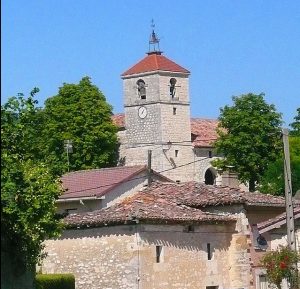
The Combat at San Millan
I’ve been driven off course during my writing of book seven of the Peninsular War Saga this week by the tangled story of the Combat at San Millan. Having emerged from the other end with enough of a grasp of events to write the chapter, I decided to prolong the distraction a little longer by sharing the story in a blog post, since this is a really interesting example of how I use research to put the books together. It’s also an example of how important it is to me to find a variety of sources if I possibly can, and how challenging it can be to come up with a coherent account.
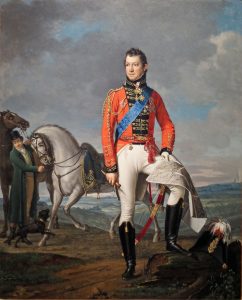
The Combat at San Millan was a small action fought by Lieutenant-General Charles Alten’s Light Division on 18th June 1813 during the march on Vitoria. To give a brief summary, Alten’s division was ordered to march across the hills via La Boveda towards the village of San Millan with the intention of outflanking General Reille’s corps at Osma. At San Millan, they unexpectedly encountered General Maucune’s division which was on its way to join up with Reille’s main force. After a short, sharp fight, Reille’s forces retreated before the Light Division, leaving behind approximately 400 dead, wounded and prisoners and the entire baggage train.
My usual first source for any battle that I’m about to write is Sir Charles Oman’s epic History of the Peninsular War. Generally speaking, he can be relied upon for a straightforward account of who did what, and where and when. Once I’ve got the sense of what happened from Oman, I will search any other histories, published letters and memoirs from the period which might cover that action for further details which can be incorporated into my fictional account.
In the case of San Millan, there are a number of different accounts, but as I began to plan out the action and to work out the best way to weave in my fictional brigade it was clear that not all these agreed. As I went on, I became more and more confused.
There were two brigades in Alten’s division in 1813. To avoid confusion I will leave out the fictional exploits of Paul van Daan and his men at this point.
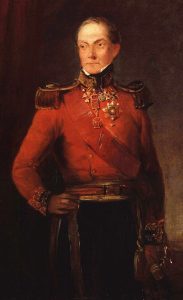
The first brigade was led by Major-General Sir James Kempt and consisted of the 1st battalion of the 43rd foot, the 1st battalion of the 95th rifles, five companies of the 3rd battalion of the 95th rifles and the 1st Portuguese caçadores.
The second brigade was led by Major-General John Ormsby Vandeleur and consisted of the 1st battalion of the 52nd foot, the 2nd battalion of the 95th rifles and the 3rd battalion of the Portuguese caçadores.
Under normal circumstances, the Light Division would march in brigade order with Kempt’s men at the front.
According to all sources, the first to encounter the French were the cavalry scouts attached to the Light Division, the hussars of the King’s German Legion. After chasing away the French cavalry patrols, the KGL reported back to Alten, who ordered in the first troops. This is where it becomes confusing.
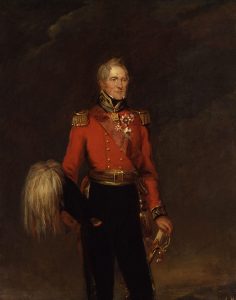
Oman says that Vandeleur’s Brigade was at the head of the British column and were sent in to attack immediately, the 95th and Portuguese caçadores in the front line and the 52nd in support. Macaune initially stood to fight, knowing that his second brigade with his baggage train was approaching. Shortly afterwards, Kempt’s brigade made an appearance and began to deploy to the left of Vandeleur’s at which point Macaune gave the order to retreat through the village. Macaune’s second brigade then appeared with the baggage in the rear and were attacked, by Kempt’s brigade, while Vandeleur’s men continued to pursue the first brigade through the village.
Tim Saunders and Rob Yuill in their recently published Light Division in the Peninsular War 1811-1814, give the same account of the French presence at San Millan, but give Kempt’s brigade as being the leading brigade. They say that Wellington arrived immediately on the spot as the cavalry was giving Kempt the information and immediately directed the 1st and 3rd battalions of riflemen, supported by the rest of Kempt’s brigade, to attack the French. They then go on to say that the 52nd along with the 1st and 3rd caçadores attacked and cleared the village. Meanwhile, Vandeleur’s brigade, which had been some distance behind Kempt’s came forward and the 43rd and second 95th were deployed across the valley. This account goes on to say that Kempt’s brigade continued the pursuit of the French 1st brigade through the village while Vandeleur’s brigade chased the 2nd brigade into the hills.
We now move on to English Battles And Sieges In The Peninsula by Lieut.-Gen. Sir William Napier. Napier gives a very brief summary of the battle but does not separate out the different brigades or battalions apart from the fact that the first attack was by riflemen followed by the 52nd. He says the rest of the Light Division remained in reserve. He then describes the 52nd’s fight on the hillside and says that the reserve were chasing the French who then came up behind the 52nd. Reading between the lines, it appears that Napier views Vandeleur’s Brigade as the reserve, but does not give any explanation as to why the 52nd, which was part of Vandeleur’s Brigade, seemed to have been fighting with Kempt’s Brigade.
There is enough agreement between Napier and the more recent history of the Light Division to suggest that Saunders and Yuill agree with his interpretation of events. To move on to another earlier history, I looked at J W Fortescue’s History of the British Army. Fortescue describes the skirmish in volume 9 and once again agrees with the role of the German hussars. In his account, Alten received the news of the presence of the enemy and sent forward the Rifles from Kempt’s Brigade.
At this point, Wellington arrived. He sent the rest of Kempt’s Brigade (i.e. the 43rd and 1st caçadores) along with the 3rd caçadores from Vandeleur’s Brigade in support. This is interesting. There is no information about how much time elapsed between Alten’s first orders and Wellington’s arrival and secondary orders, but what seems clear is that by this time, Vandeleur’s Brigade was close enough for Wellington to give orders to send in both battalions of Portuguese. What is also interesting is that Fortescue does not mention the 52nd being sent in with them.
Fortescue then goes on to describe one of the notable parts of the skirmish:
“While this fight was going on , Macune’s second brigade suddenly emerged from a rocky defile, where upon Vandeleur’s brigade instantly flew upon their left flank. The unhappy French made for a hill a little way to their front; but the Fifty-second, who were stationed beyond this hill, turned about and raced them for the summit . A rude scuffle followed , but the bulk of the enemy…made their escape through wood and mountain to Miranda del Ebro.”
This account seems to suggest that the 52nd were already stationed upon the hill when the rest of their brigade chased the French up the hill. Does this mean they had already been stationed there before the sighting of the French second division? Or were they placed there when Vandeleur’s brigade first came up as part of the reserve? It’s not clear from this.
Another history of the Rifle Brigade was written in 1877 by William Henry Cope. It’s old, but I found some of the details delightful and they’ll definitely be finding their way into the book. With the usual early agreement about the actions of the German hussars, Cope goes on to say that Colonel Barnard, who commanded a battalion of the 95th in Kempt’s brigade led the first attack. This definitely seems to disagree with Oman’s account of Vandeleur’s brigade leading the attack, and makes more sense, as Kempt’s brigade should have been in the lead.
While Cope gives no specific details about the 43rd or 52nd, he does state that the second brigade of the Light Division (Vandeleur’s brigade) came up to San Millan at the same time as the rear brigade of the French rear-guard and that Vandeleur’s brigade attacked them.
Moving on to published memoirs and letters, we start with A Light Infantryman with Wellington: the letters of George Ulrich Barlow, edited by Gareth Glover. Barlow was in the 52nd and gives a very brief summary of the battle. He describes the incident with the 52nd atop the hill and says they were too winded to pursue successfully but gives no specifics of any other battalions or where they were.
William Surtees was a quartermaster in the 1st battalion of the 95th. He confirmed that his battalion was the first into the attack, and describes the attack on the French first brigade as being conducted by Kempt’s brigade. His description then goes as follows:
“The first brigade of the enemy being thus beaten, retreated along the great road in the direction of Espeja, leaving their second brigade and all their baggage to their fate. These latter being pressed by our second or rear brigade, and seeing us in possession of the village, and the road they had to pass, immediately broke in all directions, and dispersed themselves in the mountains over the village, each man making the best of his way. This their baggage could not do, and it consequently fell into the hands of the captors, an easy and valuable booty; but although my brigade, by beating and dispersing the enemy at the village, had been the principal cause of its capture, yet those whose hands it fell into had not the generosity to offer the least share of it to us, but divided it amongst themselves.”
This very clearly states that the first attack was made by Kempt’s brigade and the second attack upon the baggage by Vandeleur’s brigade which came in later. There is no mention of the 52nd coming in earlier and fighting with a different brigade.
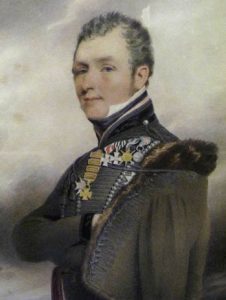
John Kincaid was another rifleman who wrote several entertaining accounts of his service in the Peninsula. His account of San Millan is brief. He served in Kempt’s brigade under Andrew Barnard. He described being part of the first attack, and chasing the French. He also complains that Vandeleur’s brigade got all the baggage even though his brigade had done most of the fighting.
While his account of the action in his memoirs is limited, there is an interesting letter from Kincaid, which was written many years later to W S Moorsom after the publication of his Historical record of the Fifty-second Regiment (Oxfordshire Light Infantry) from the year 1755 to the year 1858. I’m indebted to Gareth Glover once more for providing me with this letter along with several other accounts of the combat all of which are due to be published by him over the course of the next year. Kincaid complains to Moorsom that his account gives undue credit to the actions of the 52nd, ignoring the contributions of the rest of the battalions, particularly the 95th.
This letter sets out far more clearly than any of the other accounts, the timing of the skirmish. According to Kincaid:
“We all arrived on the hill above San Millan, at the same time, we were about half an hour there before our battalion was ordered to attack the Brigade of Maucune’s Division, which was on the road below. It was probably half an hour later before the 52nd attacked the 2nd brigade of that division, which at the time our attack was made, had not arrived within sight. I must therefore submit to you whether your description does not leave it to be inferred by those unacquainted with what took place, that there had been only one brigade of Maucune’s Division near San Millan, and that it had been attacked and dispersed by Vandeleur’s Brigade but as the other brigade of that same division had been defeated but a few minutes before by our old 1st battalion I think.”
Until Gareth provided me with this letter, I’d never come across Moorsom’s history. I was delighted to find that it is available online, courtesy of the fantastic HathiTrust website and it is clearly destined to become a regular source for my research. Like Kincaid, Moorsom is very useful for the timing of the combat. His account reads as follows:
“The following day the Light Division crossed that river at Puente Arenas, and on the 18th it suddenly came upon two brigades of Maucune’s division, which, being in observation, and proceeding from Frias to Osma, had quitted the high-road, and were moving along a small ridge of hills to the right of the road near the village of San Millan, with a large interval between them, and thus crossed the route of the division. The brigades of the Light Division were separated on the march, some distance apart; and as soon as the enemy were discovered, General Alten halted the division to reconnoitre, and a considerable delay took place before the first brigade (in which were the 43rd and 1st battalion 95th Rifles) were allowed to attack.
“As soon, however, as the force and intentions of the enemy were ascertained, Colonel Barnard led his battalion of the 95th Rifles down the hill, with three companies in skirmishing order among the brushwood, and three in reserve: on this the enemy at once threw out a body of skirmishers to meet the 95th, and put his column to a running pace to escape the flank fire which the first brigade now opened on him and which was kept up for some miles, inflicting on him a severe loss.
“Meantime the second brigade of the Light Division found Maucune’s rear brigade encumbered with baggage, and so far behind its comrades of the leading brigade that the action was entirely a separate affair without concert on the part of the French. On this being perceived, the 2nd battalion of the 95th, immediately extending in the brushwood, commenced a fire on the rear of the French, while the 52nd, pushing on at double quick along the flank of their column, as soon as they had gained a sufficient advance, charged upon it, and took three hundred prisoners and a great quantity of baggage, the remainder of the enemy dispersing among the mountains.”
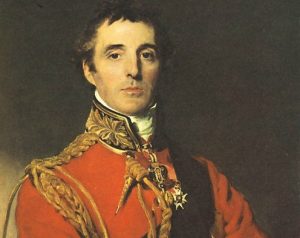 Despite Kincaid’s complaints, I actually think Moorsom sets out the roles of the various brigades and battalions very clearly; in fact I wonder if he may have adjusted a more biased account for a later edition because he seems to give full credit to all concerned in this excerpt. It also solves many of the problems of the previous accounts that I’ve mentioned above. It seems clear that General Alten did not send in his men quite so precipitately as suggested, and in fact waited until both his brigades had arrived on the hills above San Millan. That would give Lord Wellington time to make his appearance. It also sounds far more like the meticulous Alten to me.
Despite Kincaid’s complaints, I actually think Moorsom sets out the roles of the various brigades and battalions very clearly; in fact I wonder if he may have adjusted a more biased account for a later edition because he seems to give full credit to all concerned in this excerpt. It also solves many of the problems of the previous accounts that I’ve mentioned above. It seems clear that General Alten did not send in his men quite so precipitately as suggested, and in fact waited until both his brigades had arrived on the hills above San Millan. That would give Lord Wellington time to make his appearance. It also sounds far more like the meticulous Alten to me.
Moorsom is also very specific that the 43rd and not the 52nd was with Kempt’s Brigade, and it was that brigade which was sent to attack the French first brigade which was waiting in and around the village. Most of the fighting seems to have been done by the riflemen, with the 43rd ready in support. This left Vandeleur’s Brigade, including the 52nd, in reserve and they only became involved in the fight when the French second brigade with the baggage train made its unexpected appearance.
As an interesting aside, Moorsom’s account, written as a regimental history in the mid-nineteenth century, makes no mention at all even of the existence of the two Portuguese battalions even though they were an integral part of the Light Division, and both Oman and Fortescue agree that they were sent into battle very early on by Lord Wellington himself. He also fails to mention the role of the Spanish division who continued the pursuit of the French into the hills. Clearly Moorsom preferred to ignore the multi-national nature of Wellington’s Peninsular command.
An account by William Freer of the 43rd (courtesy of Gareth Glover) confirms Moorsom’s suggestion that the 43rd remained ready in support, leaving most of the fighting to the riflemen:
“We were not brought into play, but were kept in reserve dreading another [column] coming from the same point which would (had we been all pursuing) have been an inconvenience.”
Gareth Glover also provided me with an account by William Rowan of the 52nd, which makes it easy to see how some of the confusion of the various accounts may have come about. Rowan describes the combat thus:
“We then crossed the River Ebro and on the 18th (my birthday) we had a stirring affair, when our brigade unexpectedly and to our material surprise, near the village of San Milan cut in between the two brigades of a French division on route to Vitoria by a road that crossed the one on which we were marching our regiment; immediately wheeled into line and dashed at one of the brigades as it attempted to form on some high ground to our right. It did not however, want to receive us, but after a desultory fire it dispersed in all direction among the hills. We pursued for some time, taking several hundred prisoners and capturing all the baggage.”
The tone of Rowan’s account suggests that the 52nd flew into action the moment the French were sighted, and contradicts the measured account given by Moorsom. However, when you read it carefully, Rowan agrees that the 52nd’s attack was in fact made on the second brigade and the baggage, which most accounts agree did not even appear until after Kempt’s brigade was engaged fighting the French in the village. Rowan was definitely only interested in his own regiment’s part in the affair and does not mention any of the other battalions involved.
Which brings me very neatly to my own part in the Combat at San Millan. As a writer of historical fiction, it isn’t my job to decide which historian has it right and which doesn’t. In order to write a believable story, I need to choose the accounts that seem most likely, weave in my fictional regiment, and allow the historians to pick apart the rest. The list I’ve given is probably by no means complete. More accounts are being discovered all the time, and historians such as Gareth Glover do an amazing job of editing, publishing and interpreting them for their readers.
I already know the part I want Paul and his men to play at San Millan, and I’m going to go with the accounts of Moorsom and Kincaid. Their detailed timings are very useful and the delay before the initial attack gives me the opportunity to introduce a ‘Wellington moment’. In the face of so much conflicting evidence, I’m going to fall back on the most likely scenario which is that Kempt’s brigade, with the 43rd, was sent in first leaving Vandeleur’s brigade to deal with the second French brigade when it turned up. I will also borrow some of the individual stories from the other accounts, because they’re fun.
The enormous amount of information that needed to be sifted for an account of a small fight at San Millan makes it easy to understand why there are so many books written about a huge battle such as Waterloo. I’m going to end with a quote from Wellington. There are so many quotes attributed to him, but this one, or at least a version of it, seems more reliable than most. It also sums up very nicely what I’ve learned from researching battles for historical fiction.
“The history of a battle, is not unlike the history of a ball. Some individuals may recollect all the little events of which the great result is the battle won or lost, but no individual can recollect the order in which, or the exact moment at which, they occurred, which makes all the difference as to their value or importance.” (Letter to John Croker, 8 August 1815, as quoted in The Waterloo Letters (1891) edited by H. T. Sibome)
Now let’s see what Major-General Paul van Daan makes of the Combat at San Millan…
Book Seven of the Peninsular War Saga, An Indomitable Brigade, is due to be published this November.
For those interested in my ramblings on writing, history and Labradors, I’m on Facebook and Twitter, so please like, follow and join in the fun.
Twitter: https://twitter.com/LynnBry29527024
Facebook: https://www.facebook.com/historyfiction1803/
Instagram https://www.instagram.com/lynnbryant1803/
Once again I’d like to thank Gareth Glover for generously providing me with several as yet unpublished sources for this post. There is a full list of the sources I’ve used here but I’d recommend you have a look at Gareth’s website and watch out for future publications as there are still many more unpublished Peninsular War memoirs to come, and they’re all fascinating.
Sources
Cope, William Henry The History of the Rifle Brigade (the Prince Consort’s Own) Formerly the 95th, Chatto and Windus, 1877)
Fortescue, J W A History of the British Army (Volume 9), Naval & Military Press, 2004
Glover, Gareth (ed) A Light Infantryman with Wellington: the letters of George Ulrich Barlow, Helion and Co, 2018
Glover, Gareth (ed) Unpublished account of Henry Booth (43rd)
Glover, Gareth (ed) Unpublished account of William Freer (43rd)
Glover, Gareth (ed) Unpublished account of Surgeon Gibson (52nd)
Glover, Gareth (ed) Unpublished letter from John Kincaid to W S Moorsom
Glover, Gareth (ed) Unpublished account by William Rowan (52nd)
Kincaid, John The Complete Kincaid of the Rifles, Leonaur, 2011
Maxwell, W H (ed) Peninsular sketches; by actors on the scene, H.Colburn, 1844
Moorsom, W S (ed) Historical record of the Fifty-second Regiment (Oxfordshire Light Infantry) from the year 1755 to the year 1858, R Bentley, 1860
Napier, Lt-Gen Sir William English Battles And Sieges In The Peninsula (Extracted From His ‘Peninsula War.’) John Murray, 1855
Oman, Sir Charles History of the Peninsular War (Vol 6), Naval & Military Press, 2017
Surtees, William Twenty five years in the Rifle Brigade, William Blackwood, 1833

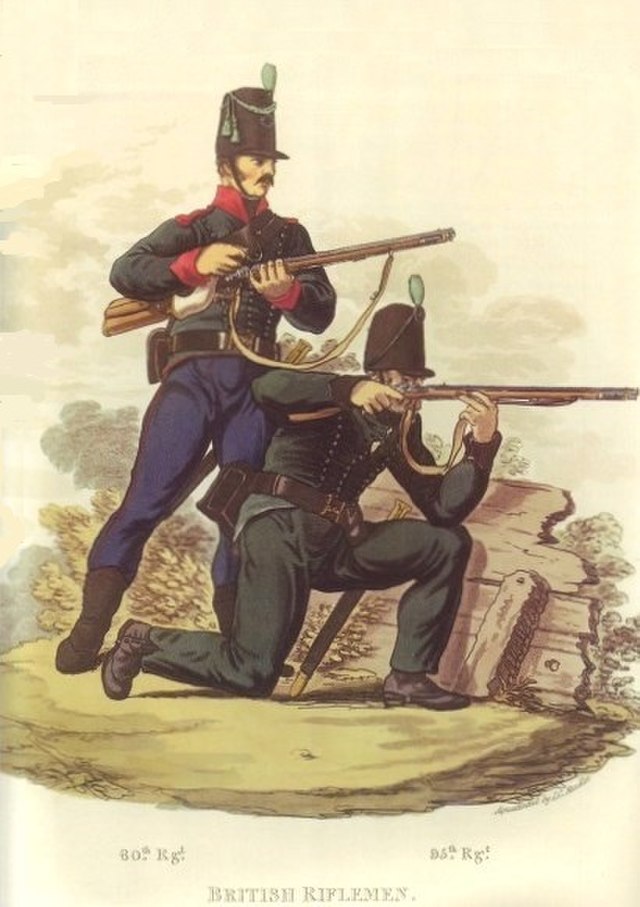
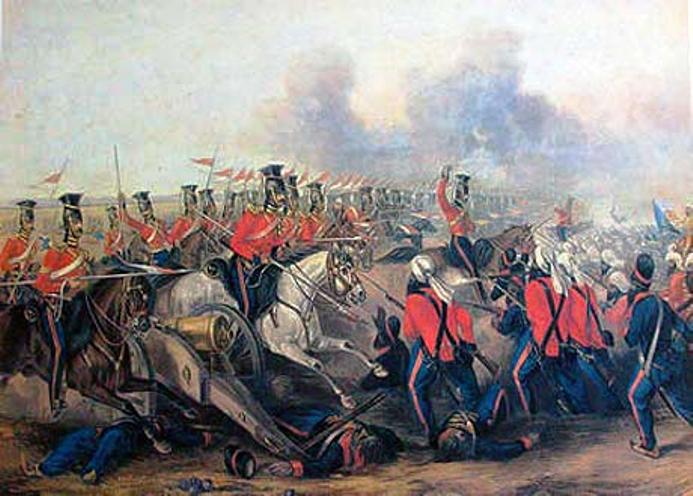
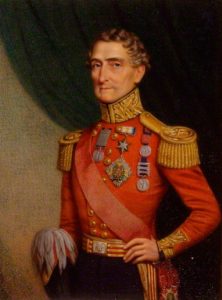
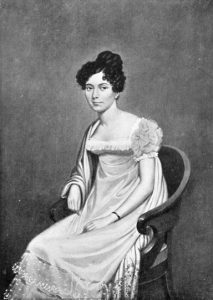 In April, Wellington’s army successfully stormed Badajoz and the army sacked the city, turning into a drunken mob whom even their own officers could not control for several days. Looting, murder and rape were committed openly and many citizens, especially women, fled from the town to take refuge at the British lines, hoping that the officers would protect them. One such lady, whose home had been destroyed, brought her younger sister with her, a girl of fourteen newly returned from a convent education. Juana Maria de Los Dolores de Leon appears to have shaken off the restrictions of her upbringing very quickly. Within a few days she was the wife of Captain Harry Smith and remained by his side for the rest of the war.
In April, Wellington’s army successfully stormed Badajoz and the army sacked the city, turning into a drunken mob whom even their own officers could not control for several days. Looting, murder and rape were committed openly and many citizens, especially women, fled from the town to take refuge at the British lines, hoping that the officers would protect them. One such lady, whose home had been destroyed, brought her younger sister with her, a girl of fourteen newly returned from a convent education. Juana Maria de Los Dolores de Leon appears to have shaken off the restrictions of her upbringing very quickly. Within a few days she was the wife of Captain Harry Smith and remained by his side for the rest of the war.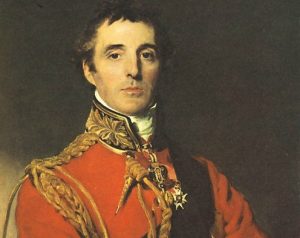 “I have read the account of many a battle, but I never read the account of one in which more ability, energy, and experience have been manifested than in this. I know of no one, in which an officer ever showed himself more capable than this officer has, in commanding troops in the field. He brought every description of troops to bear with all arms, in the position in which they were most capable of rendering service; the nicest manoeuvres were performed under the fire of the enemy with the utmost precision, and at the same time, with an energy and gallantry on the part of the troops never surpassed on any occasion whatever in any part of the world. I must say of this officer, that I never have seen any account which manifests more plainly than his does, that he is an officer capable of rendering the most important services and of ultimately being an honour to this country.”
“I have read the account of many a battle, but I never read the account of one in which more ability, energy, and experience have been manifested than in this. I know of no one, in which an officer ever showed himself more capable than this officer has, in commanding troops in the field. He brought every description of troops to bear with all arms, in the position in which they were most capable of rendering service; the nicest manoeuvres were performed under the fire of the enemy with the utmost precision, and at the same time, with an energy and gallantry on the part of the troops never surpassed on any occasion whatever in any part of the world. I must say of this officer, that I never have seen any account which manifests more plainly than his does, that he is an officer capable of rendering the most important services and of ultimately being an honour to this country.” Book five of the Peninsular War Saga, An Untrustworthy Army, is due for publication on kindle at the end of November and in paperback in December. The first four books are available on Amazon
Book five of the Peninsular War Saga, An Untrustworthy Army, is due for publication on kindle at the end of November and in paperback in December. The first four books are available on Amazon